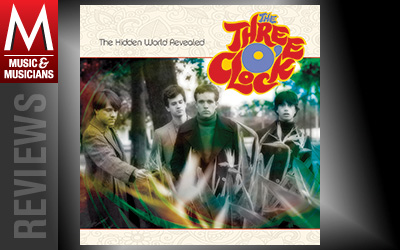 The Three O’Clock
The Three O’Clock
The Hidden World Revealed
[Omnivore]
In the early ’80s, two separate yet parallel strains of Southern California rock offered different takes on ’60s revivalism. On one end, there was the hardcore punk of Black Flag and their ilk—bands that redefined “loud” and “fast” by pushing the antiestablishment rock of forefathers like Credence Clearwater Revival to hulking extremes. Punk was great for angry teenagers, but what about those with frillier tastes, fans too delicate for the mosh pit and musicians too skilled for three-chord anthems? For these folks, there was the Paisley Underground, an L.A. scene based around the experimentalism and escapism—not the righteous anger—of the psychedelic era. From this sea of pointy shoes and Farfisa organs there emerged only one breakout band, the Bangles, but if not for the Three O’Clock, the movement might never have gotten its name.
Indeed, Three O’Clock frontman Michael Querico coined the phrase “Paisley Underground,” and as this 20-track retrospective makes clear, he also helped define its sound. Collecting material from the band’s early years—before it signed with Warner Bros. and recorded an album for Prince’s Paisley Park imprint—Hidden World speaks for a specific time and place. Amid the jangling guitars, harpsichord keys and oft-trippy imagery (“With a Cantaloupe Girlfriend”), the Three O’Clock drew from more recent sounds, most notably ’70s power-pop. And as the rough early demos reveal, the Paisleys weren’t so different from the punks. One crew wanted to bash your head in—the other sought to expand your mind. Either way, you were in for a trip.–Kenneth Partridge



comment closed